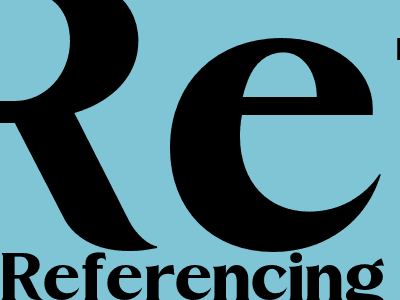
Referencing Refers To A Process Of
## Referencing: A Comprehensive Guide to Citing Sources in Your Writing Understanding how to reference sources is crucial for academic writing and professional communication. Referencing allows you to give credit to the original authors whose work you have used and to provide readers with a way to verify your claims. ### **Types of Referencing Styles** 1. **MLA (Modern Language Association)**: Widely used in the humanities and social sciences. 2. **APA (American Psychological Association)**: Often used in psychology, education, and business. 3. **Chicago Manual of Style (CMOS)**: Extensive style guide used in history, humanities, and publishing. 4. **Vancouver (Numerical)**: Numeric referencing system common in scientific and medical writing. 5. **Harvard**:** Author-date system often used in law, economics, and political science. ### **Key Elements of a Reference List** Regardless of the referencing style used, each reference listing typically includes the following elements: 1. **Author(s)**: List all authors' names in the order they appear in the source. 2. **Date of Publication**: Include the year of publication in parentheses (YYYY) immediately after the name(s) of the author(s). 3. **Title of Publication**: Include the full title of the publication. 4. **Publication Information**: Provide the details of where the publication was published, including the city and name of the publisher. ### **In-Text Citations** In-text citations provide brief information about the source within the text of your writing. They include the author's last name and the publication year, enclosed in parentheses. - **Direct Quotations**: If you include a direct quote from a source, add the page number after the year. (Smith, 2020, p. 10) ### **Referencing Tools** Many online tools can help you create accurate references, such as: 1. **Zotero**: Open-source reference manager that integrates with web browsers and word processors. 2. **Mendeley**: Cloud-based reference manager with collaboration features. 3. **Citation Machine**: Free online tool that generates references in various styles. ### **Importance of Referencing** 1. **Avoid Plagiarism**: Referencing helps you acknowledge the work of others, preventing accusations of plagiarism. 2. **Build credibility**: Referencing shows readers that you have researched your topic and are basing your claims on reliable sources. 3. **Support Arguments**: Using references strengthens your arguments and makes them more persuasive. 4. **Facilitate Scholarly Discussion**: References enable readers to find and access the sources you have used, fostering scholarly dialogue. ### **Conclusion** Referencing is an essential aspect of academic and professional writing. By understanding the different referencing styles, key elements of a reference list, and the use of in-text citations, you can effectively give credit to sources and demonstrate the credibility of your writing. Always verify the specific referencing style required by your instructor or organization and use it consistently throughout your work.
Komentar